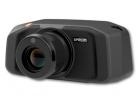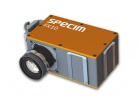Hyperspectral cameras are used in a variety of applications - biomedical, chemical industry, aerospace, remote sensing, temperature measurement, etc. Hyperspectral cameras aim to obtain an image of the sensed area so that each pixel contains and records the complete spectrum of incident light. Hyperspectral imaging (or imaging spectroscopy) uses knowledge of the spatial relationships between different spectra to create a more detailed spectral-spatial model for more accurate segmentation and classification of the resulting image. Unlike conventional cameras, hyperspectral cameras divide the colour visible spectrum (red, green and blue wavelengths) into many small wavelength bands, which is the main reason why these types of cameras are able to provide much more detailed information about the object being imaged. There are several methods of hyperspectral imaging, one of the most reliable being the capture of a scene by a camera in the so-called push-broom mode, where a line scan of the image occurs (only one line is captured). In this scanning mode, it is required that the specimen or the camera moves in such a way that the entire scanned area can be captured. By stacking the line scans as the camera moves relative to the object, a flat spatial image is obtained.

